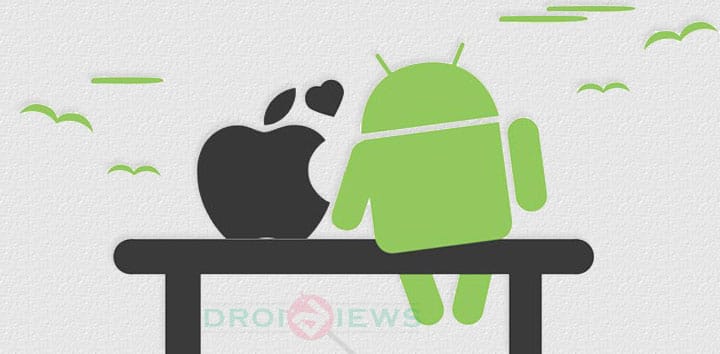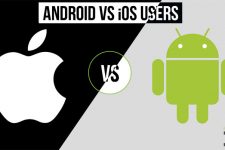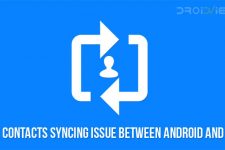
The ongoing battle between iOS and Android devices took an interesting twist recently after the former’s creator, Apple, announced the release of an app showing users of the latter how to switch allegiances.
In the past Apple has ruffled Google’s feathers with a series of “switching” guides, but the company’s latest creation is a clear attempt to pluck as many of those previously ruffled feathers from Android as possible.
Dubbed “Move to iOS”, the new app will be rolled out with iOS 9 and allow users to seamlessly transfer their Android interests to a shiny new iPhone. Thanks to some software trickery and brazen confidence, Apple’s new app will allow former Android users to securely transfer their contacts, messages, photos, calendars, and videos all with a few touches of their screens.
Instead of requiring users have to manually back up their treasured possessions, upload them to an online server or computer and then find a way to download them onto a new phone, the process will now be a lot less painful. Although the finer details of the app are being kept under wraps, it’s expected that the product will first launch in the iOS Store before going live in the Play Store.
Once a user has both applications, their vital details will be wirelessly transferred across from one device to another within a few minutes. As well as offering a transfer service, Move to iOS will also suggest free iPhone/ iPad apps that users previously used on their Android device.
If that wasn’t enough, Apple’s final sucker punch, the move that’s clearly been designed to completely defeather Google, is the note included in the app which reads as follows:
“Transfer Complete – Recycle your Android Phone: You can recycle this Android phone for free at any Apple Store.”
As if it wasn’t clear enough that Apple was plotting to steal as many Android users as possible and deplete its rival’s army, then this message says it all.
Apple or Google?
While this battle between Apple and Google in the mobile market is extremely entertaining from a tech fan’s perspective, what does it mean for the consumer? Does this rivalry mean we’ll see a growing number of native apps locked specifically to Android or iOS platforms?
Although it’s unlikely the two companies would force the hand of app designers around the world, there’s a possibility that we could see more products designed to pull consumers in one way or another. If this is the case then it could start to limit the options mobile users have in the market and cause a further divide among the mobile world’s two biggest players.
It’s Better with Both
Although Apple and Google might see themselves as two competitors in the same marketplace, the reality is that they are the yin and yang of the tech world. Aside from giving mobile users two quality platforms to engage with the virtual world through, the rivalry between Apple and Google has created a more diverse market.
Regardless of the platform users put their faith in, the leading developers and brands have got them covered. Because the largest companies in the world understand that Android and iOS are platforms of equal standing, users don’t have to choose between one or the other if they want to process money, entertain themselves or interact across social media platforms.
Facebook: The largest social network in the world wouldn’t hold that lofty status if it didn’t offer apps for both Android and iOS. Excluding one demographic in favour of another is professional suicide and by offering native apps for Apple and Google fans, Facebook has not only become the largest desktop site in the world but one of the most downloaded free mobile apps.
Indeed, the idea of social networking is to be in constant contact with everyone and anyone around the world, so if users were limited to interactions only with other Android or iOS users, it wouldn’t make for a particular “social” experience.
PayPal: Moving money around the world depends on connectivity and the best way to do that is become active on as many platforms as possible. PayPal’s native app is not only popular because of its individual app, but because of its link to eBay. Because eBay is an international marketplace, PayPal needed to create a platform available on both Android and iOS platforms. Indeed, without this cross-platform compatibility it would much harder for mobile users to send and receive funds.
PokerStars: Similar to how social networks payment processors (Facebook and PayPal) survive, online gaming sites must also have cross-platform connectivity. PokerStars is one of the largest online poker sites in the world and offers a free app for Android and iOS users for one simple reason: its network. For poker games to thrive they need players and this is only possible if users can log in via a range of devices.
Angry Birds: Unlike games such as poker that rely on a network of players to thrive, Angry Birds is a self-contained product that focuses on a single user’s experience. However, this doesn’t mean the developers, both for Angry Birds and other mobile games could simply focus on a single platform. The reason for this is because diversity breeds progression.
As iOS devices become more advanced it allows game developers to integrate more features, more functionality, and more quality. This, in turn, spurs more growth in the Android world and vice versa. This evolutionary ebb and flow is what drives the market forward and creates a more interactive experience for users on both sides of the mobile divide.
The Future of Mobile Apps
Will Apple’s iOS 9 “Move to iOS” app signal a new, more divisionary era in the mobile market? Will we see developer wars spring up as design houses pick sides in a virtual app battle? The most likely answer is no.
Major brands are major brands for a reason: they cater to the masses. Limiting a product to iOS or Android is flawed move by any measure of business sense, so it stands to reason that few companies would choose to side with Apple or Google if a rift did occur in the market.
However, that doesn’t mean some companies may not see this as an opportunity to join one side or the other and promote themselves as a niche product. Although this wouldn’t be anything new, a brand may decide to only offer an iOS app and brand itself as a preparatory product. In fact, this dynamic could be enhanced further if Apple or Google decided to add certain incentives to developers for sticking with one side or the other.
Although it’s unlikely to ever get to the point where the two mobile companies are paying fees to developers in order to keep them on one side of the divide, it’s not impossible. Apple’s latest move is a blatant jab at Google and one that could take the two’s rivalry to a new level. In the interests of quality, diversity and connectivity, the average mobile user should hope this doesn’t happen; however, as we’ve seen so many times in the past, when one company wants to dig its heels in (think Apple and Flash), then it certainly will regardless of the commercial consequences.





Join The Discussion: